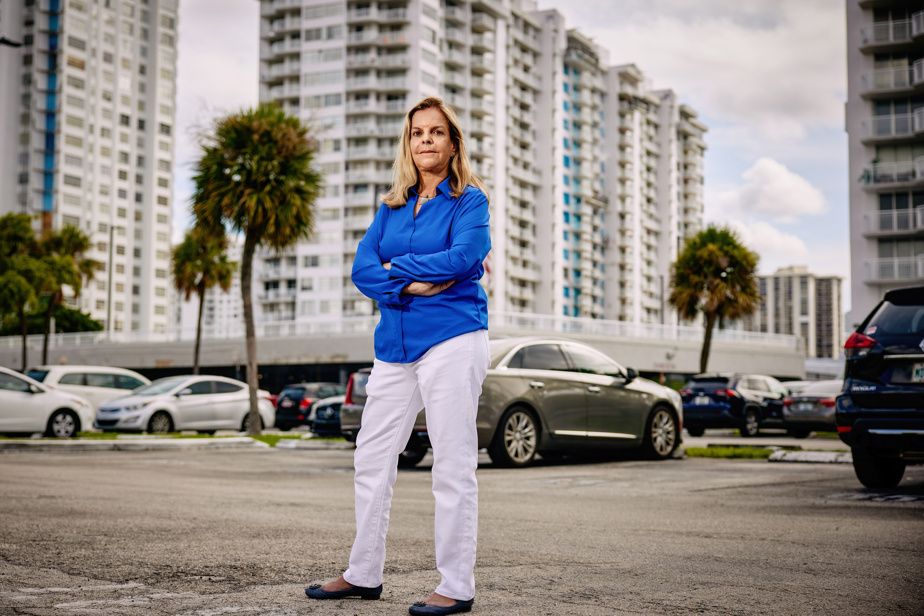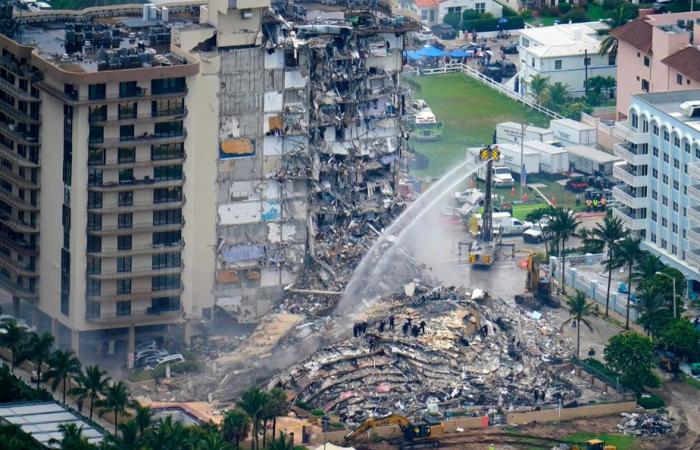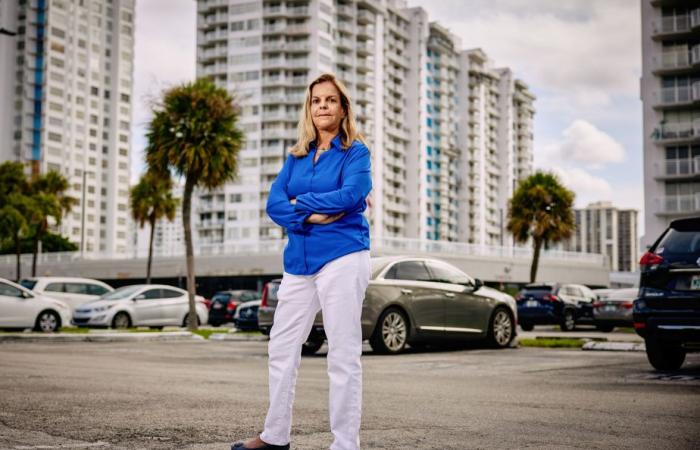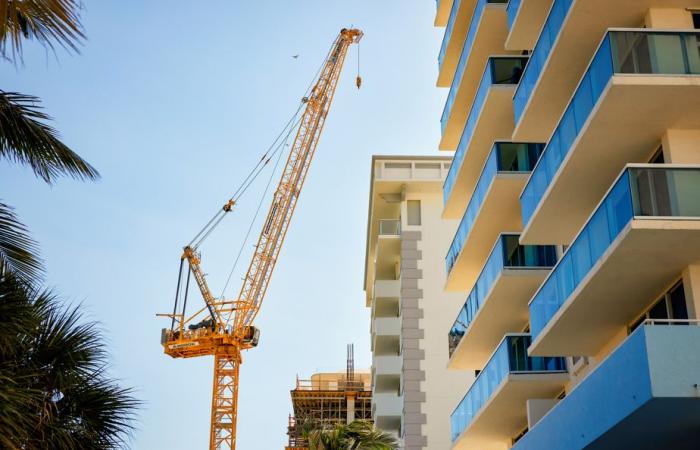(Miami) Ten years ago, Howard and Sheila Konetz paid $478,500 for their Florida dream: an 1,820-square-foot condo in a leafy gated community, with access to a sports club, tennis courts and swimming pools. . Luxury, calm and pleasure for their retirement, they thought. With savings and the sale of their single-family home, the couple purchased mortgage-free and moved into their condo in Aventura, north of Miami.
Posted at 1:17 a.m.
Updated at 8:00 a.m.
Julia Echikson
The New York Times
Seven years later, on June 24, 2021, in the neighboring town of Surfside, the Champlain Towers South building partially collapsed, killing 98 people: structural elements of concrete and corroded steel had failed.
Florida authorities responded by requiring inspections, improvements and the creation of a contingency fund on all condominiums aged 30 and over.
PHOTO GERALD HERBERT, ARCHIVES ASSOCIATED PRESS
Rescuers found 98 bodies in the rubble.
The result for the Konetzes: a bill for $224,000, their share of the estimated cost to repair and renovate their 36-year-old building. Unable to borrow or sell, the couple could declare bankruptcy.
“I don’t want to end up on the street, but that’s what awaits me,” sighs Howard Konetz, a septuagenarian.
All our money is tied to this white elephant.
Howard Konetz, who owns a condo in Aventura, Florida with his wife
The deadline for building inspections is December 31. According to supporters of the law, it is essential if we want to avoid another tragedy. In many buildings, structural repairs have been neglected for decades. For owners, often retirees or snowbirds of the North, the Florida dream has become a financial nightmare.

PHOTO SCOTT MCINTYRE, THE NEW YORK TIMES
Work outside the building where Howard and Sheila Konetz’s condo is located in Aventura, north of Miami. The new Florida law requires co-ownership associations to finance work, but the bill is steep for co-owners.
About 1 million condos are covered by Florida’s 4-D law, leaving owners with a stark choice: pay up, sell or foreclose. Many retirees, who have fixed incomes, cannot afford to pay these new mandatory fees. Potential buyers are now avoiding older buildings. At the same time, insurance premiums are rising due to increasingly violent storms, such as Hurricane Helenewhich devastated Florida at the end of September.
“It’s going to be a crisis,” says state representative Vicki Lopez, who represents part of Miami and who contributed to the reform of the co-ownership regime. It’s like seeing a tidal wave coming.
Before the Champlain Towers tragedy, Florida’s condominium regulations were minimal. In 1981, upon completion of the three-building complex, the Town of Surfside had a single, part-time building inspector, and both the architect and structural engineer of Champlain Towers had disciplinary records for buildings deficient. But like the snowbirds arrived each winter in greater numbers, the City authorized other condo projects.
As of 2021, only two of Florida’s 67 counties required “recertification” (involving inspections and renovations) after 40 years. Even these rules have proven insufficient. Often, condominium boards were unable to raise the necessary funds.
Many have given up on building up reserves: there were retirees on the board of directors and many other co-owners were retirees. They shoveled the problem forward.
Vicki Lopez, elected to Congress from Florida
In addition to condo buildings over 30 years old and three stories or more, the law targets buildings 25 years old and over located less than 4.8 km from the coast. It now requires co-owners to contribute to a provident fund for the maintenance of buildings. An inspection determines the total assessment for the next 10 years for critical structural elements (roofs, balconies, etc.). The process repeats every 10 years.
In 2009, Thereza Teixeira paid $146,000 for a 1,565-square-foot condo in Aventura’s Plaza Del Prado. A good investment, she thought. After the 2008 housing bubble, interest rates were low and the 20-story tower, built in 1971, was conveniently located near Biscayne Boulevard, a major thoroughfare in Miami-Dade County.
“This condo was one of my goals in life,” explains M.me Teixeira, 61 years old. “It was my first big purchase; It showed that I had succeeded. »

PHOTO SCOTT MCINTYRE, THE NEW YORK TIMES
Thereza Teixeira had to find a second job to pay for repairs and new contributions to the contingency fund of her condo in Miami.
But she hadn’t taken into account the age of the building. Since last year, she has had to contribute $338 more per month for building maintenance, for a total of $1,390 per month; that’s $500 more than his mortgage payments. She had to find a part-time job in addition to her full-time job – she looks after second homes for absentee owners – and she cut back on her contributions to her retirement savings.
This condo is like a bad marriage […]it’s too expensive to divorce your husband.
Thereza Teixeira
Across Florida, condo listings are skyrocketing – along with recertifications – and sales are declining. So prices fall, with banks hesitant to lend to buyers they deem unable to cover the new mandatory contributions. Nearly 90% of condos for sale in South Florida are in buildings 30 years or older, according to Aventura-based real estate broker ISG World.
“The law makes the Florida condo market too expensive for many people,” notes Joseph Hernandez, a real estate attorney at the Bilzin Sumberg firm in Miami. “With the contingency fund, the monthly payments will be very expensive. But it should always have been like this. »

PHOTO SCOTT MCINTYRE, THE NEW YORK TIMES
A condo building undergoing construction in Surfside, the Florida municipality where a poorly maintained building partially collapsed in 2021.
The Konetz couple, with their fixed income, are among the losers. He criticizes the co-ownership association for not having saved enough. (Representatives of the board of directors did not respond to interview requests.) From now on, each co-owner must pay according to the square footage of their condo. The total bill comes to $11.4 million.
Two years ago, the Konetzes listed their two-bedroom condo for sale at $659,000. They lowered their price by $160,000, but did not receive a single offer. Me Hernandez believes suing the condo association would yield no money.
The law could change everything for people who dream of a home in Florida for generations. “The law is not good for the economy,” says Ken Johnson, a real estate economist at the University of Mississippi. “A condo in Alabama is now more expensive than the same condo located on the Florida side. »
This article was published in the New York Times.
Read this article in its original version (in English; subscription required)










